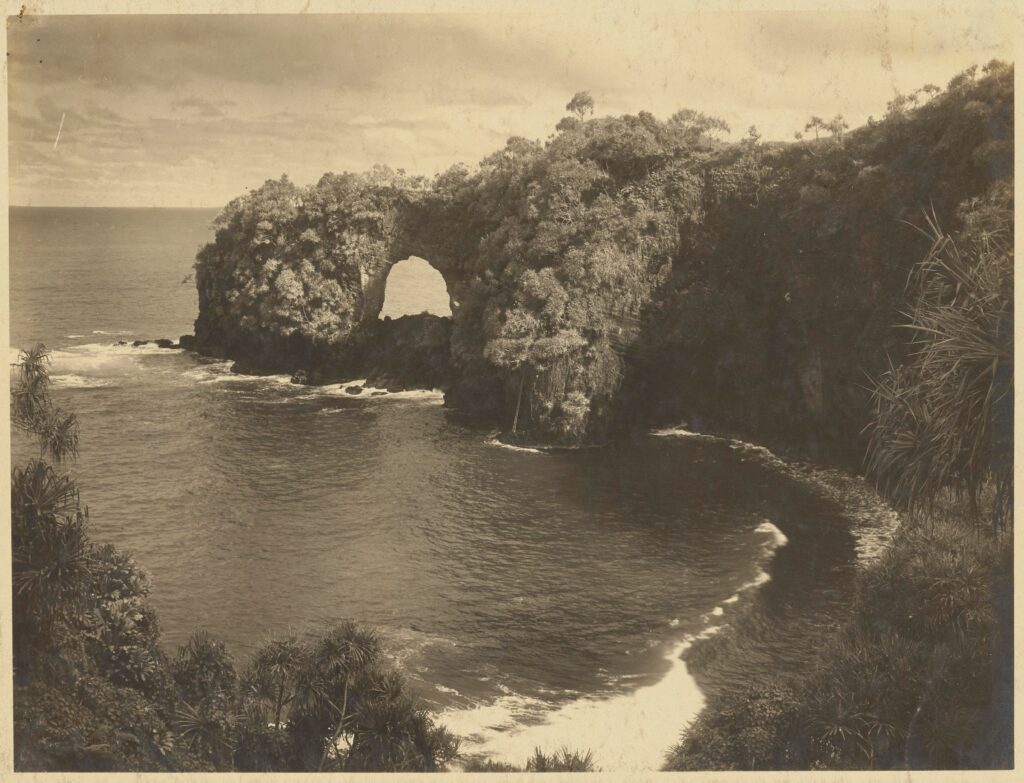geological history
We are located on the historic Onomea Bay. Geographically, the valley was carved by the waters of Onomea and Alakahi streams, which originate all the way up in Mauna Kea, and by the wind and waves which cut into the lava cliffs of the coast line. Earthquakes, tsunamis and tropical storms have also caused radical changes to the landscape.
Onomea Arch used to stand on the north side of Onomea Bay. Carved into the lava rocks by the waves, legend has it that King Kamehameha threw his spear into the rock which created a huge tunnel and arch. This famous landmark attracted visitors to Onomea Bay long before the Garden was established. Onomea Arch fell during an earthquake in 1956, and today appears as a wide crevice in the cliff on the north side of Onomea Bay which can be viewed from Ocean Vista in the Garden.











